
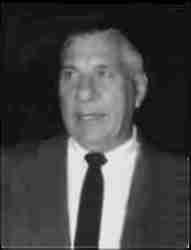
1899-1987 |
 |
 |
|
from Chasing The Sun Courtesy of National Archives and Records Administration. |
from Collection of Lester Bishop Courtesy of David Balanky |
|
The history of commercial aviation seen through the eyes of its innovators A production of KCET Hollywood This website, based on the book "Turbulent Skies: The History of Commercial Aviation" by T. A. Heppenheimer, is an absolute treasure house of information for the aviation enthusiast. I found it while searching the net for information on Dean C. Smith, In addition to Dean, there are entries for Louis Bleriot, Harriet Quimby, Antoine de Saint Exupery, Charles Lindbergh and Howard Hughes. In the case of the entry for Dean Smith, you will find a full page story of his service in the U. S. Postal Service which began on May 21, 1920. In addition, there are two little photographs and two little video clips on his page. The first video is an excerpt from episode 1 of Chasing the Sun about Dean Smith and the dangers of being an early air mail pilot. (1:29, sound) The second is Archival newsreel footage of Pres. Woodrow Wilson attending the U. S. Post Office’s first air mail service on May 15, 1918. (3:02, silent) Dean C. Smith. While you are on the site, I heartily recommend that you click on "HOME" and enjoy the whole site. I am sure you will be glad you did. If after reviewing the site, you want to buy the PBS video series, here is the information you will need. |
|
Closed Captioned
Length: 210 minutes on 4 tapes Item Code A5707 Availability IN STOCK $59.95 |
From the 1903 gravity-defying flight of the Wright brothers to the computerized jumbo jets of today, mankind's quest to fly is the story of one exhilarating adventure after another. This fascinating series retraces the growth of commercial aviation from quirky novelty to essential transportation link. Episodes: Heroes and Daredevils, The Visionaries, Into the Jet Age, and All Aboard |
Just click on shopPBS |
|
ST. LOUIS MO, 1923 VERVILLE-SPERRY RACER |
||
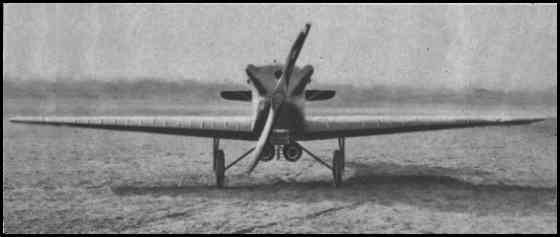 |
||
|
in the race for the Pulitzer trophy. The landing wheels fold up when it is in flight. from Collection of Walter E. Lees Wednesday 9 a. m..---Gates open 9:30 a. m.---Demonstration of the Farman plane, same as Monday and Tuesday. 11 a. m.---Event No. 7, Detroit News air mail trophy race for air mail planes and pilots. Distance: 186 miles, six times around the course. Prizes, $800, $500 and $200. Entrants: Ernest M. Allison, L. H. Garrison, William C. Hopson, James H. Knight, Harold T. Lewis, James F. Moore, Dean C. Smith, Frank R. Yager, Randolph G. Page, E. F. White, B. H. Winslow, W. F. Blanchfield, R. H. Ellis, W. D. Williams, R. F. Collins and W. L. Smith. Plane numbers not yet assigned. 2 p. m.---Event No. 8, Pulitzer trophy race, the air classic of America, for civilians and military. Distance: 124 miles, four times around the course. Prizes: $2000, $1500 and $500. Entrants: Lieut. S. W. Callaway, U. S. N., 7, Wright fighter; Lieut. L. H. Sanderson, U. S. M. C.,Wright fighter; Ensign A. J. Williams, 9, R-2-C-1; Lieut. Harold J. Brow, U. S. N., 10, R-2-C-1; Lieut. Alexander Pearson, U. S. A., 48, Verville-Sperry racer; Lieut. W. Miller, U. S. A., 49, Curtiss racer; Lieut. J. D. Corkille, 50, Curtiss racer. 4 p. m.---Demonstration of the Barling bomber, largest airplane in the world. 5 p. m.---Formation flying. 7 p. m.---Night flying demonstration, same as Monday and Tuesday nights. |
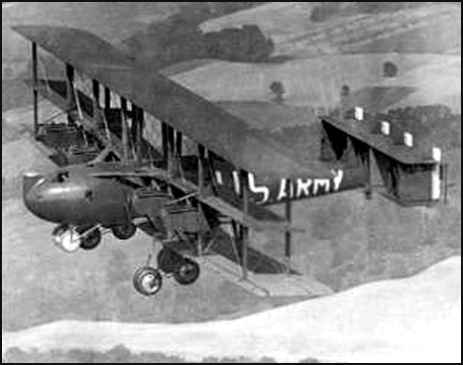 |
|
Photo Courtesy of Roy Nagl Ancient Aviators Website |
|
By Charles A. Lajotte Pilot, Gilmore Oil Company Published in Western Flying October 1936 Recently two of our major air lines have celebrated the first ten years of their service to the American public. They are proud of their progress, and justly so. More passengers are carried every year, and more safely, more comfortably, and much faster, than each previous year. But we must realize that it is the money made for flying the air mail that is mostly responsible for this progress, rather than that earned from passenger and express traffic. Now, with this idea in mind, I want to take this opportunity of relating some of the interesting incidents that occurred in the early days of the air mail, so that we may better understand some of the obstacles that had to be overcome and some of the hazards that had to be faced to make this great record possible. In 1920 I was stationed at College Park, Maryland, the air mail field for the city of Washington. There was only one other such airport in operation, that at Hellar Field, Newark, N.J., the airport for the city of New York, and this short route was the only one in actual operation in the United States. Here was collected together a small but select group of ex-Army pilots that were to make the air mail service what it has since become, the best in the world. E. Hamilton Lee, the present ranking air line pilot of the United States, was one of them, and so was Harry Huking, who now ranks second to Lee. There was Dean Smith, of Antarctic Fame; Randolph Page, Claire Vance, Jack Knight, James Murray, and Slim Lewis, all of whom had around 400 to 600 hours to their credit. These men were all excellent pilots, and were later to prove to the world that they could carry on in the air the same high grade of service and loyalty that has made their postal brethren on the ground so unique among government servants. The airplanes being used were Curtiss H's, or in simpler words, Jennies powered with Hispano-Suiza engines of 150 H.P., in place of the conventional OX5's. They were just about being replaced with De Havillands, the DH4 or 9's, powered by the recently developed Liberty motor of 400 H.P. One day in May, Harry Huking and I decided to fly over the city of Baltimore in one of these "flying coffins" to take some aerial photographs of Ham Lee coming in with the New York mail. Back in those days this now common feature was still a novelty; the first man to sight the incoming mail plane always shouted, "Mail, mail", and then all within sound of his voice would run out on the field to watch the landing. Courtesy of Barbara Perkins |
|
|
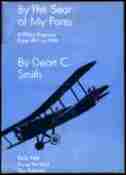 |
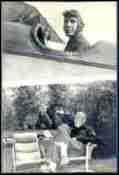 |
|
of My Pants A Pilot's Progress From 1917 to 1930 By Dean C. Smith "On trip #4 westbound. Flying Low. Engine quit. Only place to land on cow. Killed cow. Wrecked plane Scared me. Smith." Dean Smith sent this telegram to the Superintendent of Air Mail after the flight it describes so eloquently. Except for the cow, it was a more or less routine flight for an air mail pilot of the 1920's, and the account of it sets the tone for this chronicle of the early days of flying in America. |
|
Dean C. Smith was born in Cove, Union, Oregon, 27 September 1899. He died in Maryland, 4
March 1987 Courtesy of Paul Lee, 11-27-05 |


|